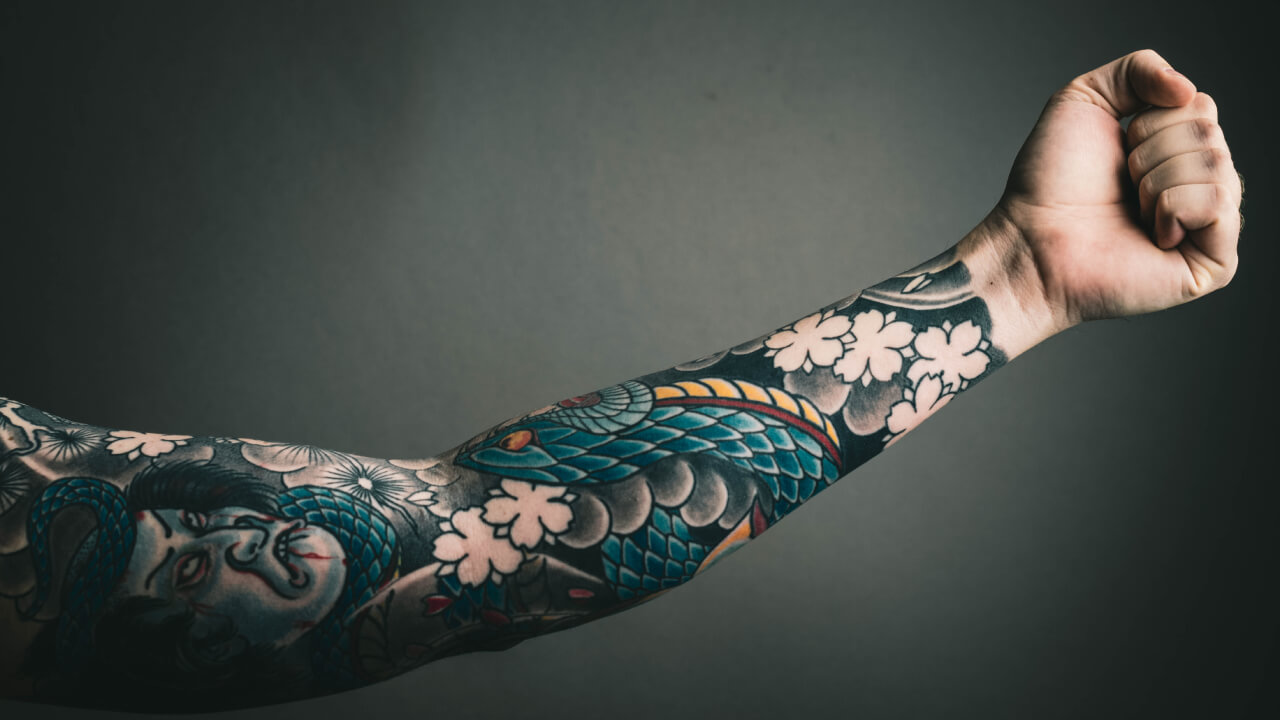
Prepare your skin for a Tattoo
Tattoos are a form of expression present since the beginning of mankind. Nowadays it is easy to find someone with a design on their skin. Many of them are like works of art. But before getting a tattoo, it is necessary to take several precautions so as not to have headaches afterwards. Pay attention to hygiene to avoid contagion from diseases such as hepatitis B and AIDS. After choosing the place and the drawing, get to know the work of your tattoo artist and pay attention to whether he uses disposable material.
According to dermatologist Fernando Passos de Freitas (CRM-106.504), some care with hygiene prevents the tattoo from becoming a facilitator for a skin infection. “Be sure to question the professional about the pigment he will use to make your tattoo. Poor quality pigments can cause damage to the skin such as allergies, stains, besides fading the colors over time,” explains the doctor.
Care before tattooing
Anyone who wants to get a tattoo needs to prepare their skin. It must be clean, hydrated and healthy. “Use a urea-based moisturizer twice a day in the area where the tattoo will be applied, so that the skin becomes more toned. Observe if there are hairs in the area: they need to be removed. The ideal is to get a waxing two days before the tattoo to avoid the inflammation of the hair”, recommends the dermatologist Fernando Passos de Freitas.
The doctor also suggests that you observe if the tattooist washed his hands with water, soap and alcohol before starting the procedure. The skin area where the tattoo will be done should also be washed and alcohol should be applied for disinfection.

Places to get tattooed
The location of the body is one of the main doubts of those who decide to get a tattoo. You can tattoo almost any part of your body. “Avoid choosing areas of the body where there is a greater accumulation of skin or that already present more flaccidity. The result may not meet your expectations, because the skin needs to be stretched when tattooing”, alerts the dermatologist.
I got a tattoo, now what?
“After the tattoo, it is necessary to bandage the place with an ointment composed of dexpanthenol acid, with the intention of reconstituting the epithelial tissue. The tattoo protection must also be taken into consideration to avoid infections and lesions”, advises the doctor Fernando Passos de Freitas.
Keep the tattoo area always clean and covered by clothes until two weeks after the procedure. Avoid getting sun, scratching or pulling peels. Wait for the tattoo to heal before returning to physical exercise. If the tattoo still has peels, exercise can cause them to crack and the design may show flaws.

After healing keep using protectors and moisturizers, using them will cause a difference in the time interval between the day you got the tattoo to the day of retouching.
Want to get a tattoo? Then pay attention to the dermatologist’s recommendations and learn what you need to know when getting a tattoo:
- Never get a tattoo under the influence of alcohol or drugs. Besides these substances being harmful to your health, your decisions should always be made in a lucid manner.
- Do a lot of research. Choose a professional who is experienced, wears gloves and sterilized equipment, and has done this kind of work before. Observe if the establishment is clean and has a good structure.
- After the tattoo, avoid eating fatty foods such as pork, ham, and seafood for the next 30 days.
- If you have ever had a tattoo done and had an allergic reaction, see a dermatologist to treat this reaction.
Avoid regret

In the vast majority of cases, tattoos are used by teenagers who, still very inexperienced, make this decision without thinking about their professional career and the aesthetic consequences during old age. Numerous surveys indicate that more than half of the people who get tattoos want to remove them later. When a person decides to get a tattoo, they must think about the possibility of not liking the image or of getting tired of it with the years, since it is very difficult to remove the images.
According to the doctor Luiz Henrique Paschoal, dermatologist member of the São Paulo regional office of the Brazilian Society of Dermatology, every tattoo can be removed, but the light pigments are more difficult, which can result in scars or even the permanence of the pigment. The possible interventions can affect the skin originating the problems that leave the marks after the removal. Doctor Beni Moreinas Grinblat, also a dermatologist at SBD-RESP, explains that the techniques available for tattoo removal are
- Sanding: as the name implies, this is a sanding of the skin that aims to remove the tattoo. The whole region where the tattoo was made is treated and there are risks of stains and scars, which is why this method is rarely used.
- Surgical removal of the tattoo: Like any surgery, it will leave a scar on the site.
- q-switched ruby and/or Nd-Yag laser: the laser ray is a light that acts specifically on the tattoo ink, sparing the surrounding tissue; consequently, with the laser treatment there is less risk of scarring. The dark pigments (blue and black) are the easiest to be removed, while yellow pigments will hardly be affected.
Physician Beni Moreinas says that the removal with the laser is done in several sessions, eight on average, which can represent a significant cost for the patient. Besides, the laser treatment is not painless, being many times performed with topical anesthesia. During the treatment, the use of sunscreen is indispensable, reminds the doctor.
As for getting a tattoo in the place where there was another drawing, in thesis, it is possible, but it depends on the removal not having left parts of the previous pigment or signs that may interfere in the new drawing. But, if even facing the possible risks, people want to get a tattoo, doctor Luiz Henrique offers some important cares.
- Keep the tattoo site always clean to avoid skin infections and acne lesions;
- Observe the hygiene conditions in the place where you intend to get a tattoo;
- Demand the use of disposable materials that are not reused, besides the hygiene of the professional himself.

With this care, it will be possible to avoid that the so dreamed of work of art becomes a scar, adds the doctor Luiz Henrique Paschoal.
According to the doctor Mônica Carvalho, from the Brazilian Society of Dermatology and the Brazilian Society of Dermatologic Surgery, an option for those who want to have a tattoo but are not sure they want to have it for life is the Henna tattoo, because it is temporary. The practice of marking the body with henna comes from a South Asian tradition. Designs can be done on the hands, feet, and face, but the average lifespan of a henna tattoo is one to two weeks.


